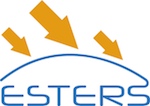We present a new solar wind model which takes a coronal magnetic field map as input, and computes a collection of solar wind profiles spanning a region of interest of the solar atmosphere (up to a full synoptic map) at any instant desired. This tool aims at producing robust predictions of the fast and slow wind speed profiles, plasma density, temperature, sound and alfvén speeds from 1 to 30-50 solar radii (and at all latitudes and longitudes) in order to constraint the trajectories and delays of propagation of disturbances occurring at the surface of the Sun or in the corona. The outputs of this model can provide a complete set of boundary conditions for heliospheric propagation models (such as ENLIL), hence outperforming the standard procedure based on WSA wind speed estimates. The method was designed to be quick (quicker than global MHD simulations) yet keeping a good description the plasma heating and cooling mechanisms (coronal heating, conductive and radiative cooling). The background coronal magnetic field is, currently, determined via surface magnetograms and PFSS extrapolations, but is ready to include constraints from data assimilation techniques as these become available. This tool is currently being tested and calibrated using coronal and heliospheric CME data, and will be included in the CDPP/STORMS service in the near future.
We will also discuss the cyclic variations of the fast and slow wind flow distributions based on numerical simulations of the solar dynamo (capable of assimilating surface magnetic field time-series), the corona and solar wind covering an 11 yr activity cycle. The wind speeds we obtained are in agreement with in-situ measurements (ULYSSES) and radio maps (IPS).
This is work is supported by the FP7 project #606692 (HELCATS).
- Présentation

 PDF version
PDF version
